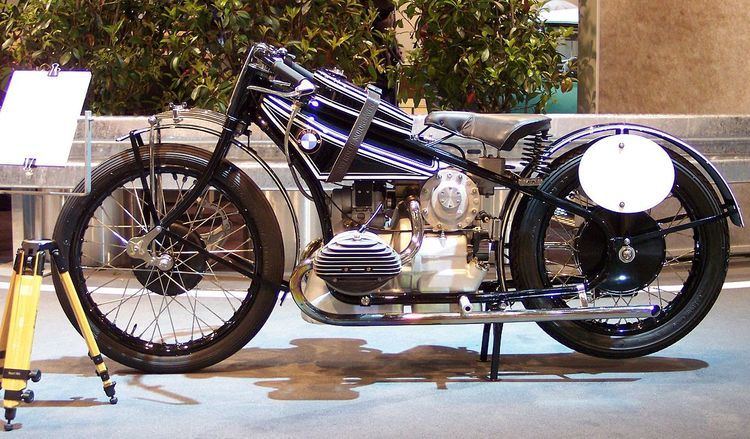 | ||
Forced induction in motorcycles is the application of forced induction (turbochargers or superchargers) to a motorcycle engine. Special automotive engineering and human factors considerations exist for the application of forced induction with motorcycles, compared to other forms of motorized transportation.
Contents
Forced induction in production motorcycles
As of September 2014, forced induction has only been applied on a handful of production motorcycles, all from Japanese Big Four manufacturers in the early 1980s.
Additionally, in 1978 Kawasaki offered the Z1R-TC, a semi-production model built by Turbo Cycle Corporation and sold through Kawasaki dealers. This is generally considered to be the first Japanese turbocharged motorcycle.
The Honda, Kawasaki and Suzuki bikes were all listed on a State Farm insurance "blacklist" published by American Motorcyclist in 1989.
21st century
A scooter with a supercharger, the Peugeot JetForce Compressor, was available in late 2003.
Kawasaki said it would be re-entering the market with the supercharged Kawasaki Ninja H2, announced in October, 2014.
Engineering and usability challenges
Designers have been able to address packaging issues and fit turbochargers even in fully faired motorcycles.
Turbo lag was noted as a problem with all four Japanese turbos of the 1980s by several critics. Motorcycle engineering expert and journalist Kevin Cameron has said that turbo lag is a critical problem with turbocharger applications on motorcycles: "[U]nless you are a pure drag racer, most of your riding will be off-boost. The lower your compression ratio, the less snap your bike will have...don't expect your turbo bike to be much use in sportbike-type canyon racing." Using a variable-geometry turbocharger can mitigate turbo lag, but has not yet been used in series production (the first mass market application was to late 1980s automobiles; see Variable-geometry turbocharger#History and examples of use).
Writer Mick Walker has listed turbo lag along with other challenges like a higher center of gravity and heat transfer to rider due to turbocharger and associated exhaust plumbing. Bennett noted excessive weight and complexity in addition to weak bottom-end performance.
The German magazine Motorrad said in 2014 that a turbocharger would probably never be practical on mass market motorcycles due to cost of high-tech materials able to withstand the high temperatures of a variable geometry turbocharger, plus weight and space considerations, though they left the door open for a good supercharged solution.
Emissions
Emissions considerations, driven in particular by carbon dioxide limits in the European emission standards, are leading motorcycle manufacturers in the 2010s to reconsider applications of forced induction.
In racing
In road racing, superchargers were not uncommon in the 1930s, and machines originally built for road racing also set many land speed records (see the list below for examples). Motorcycle racing in Europe went through a hiatus during the 1940s as World War II and its aftermath, and racing only restarted in 1946. That same year, forced induction was banned from road racing by the Fédération Internationale de Motocyclisme (FIM), effectively relegating it to specialized forms of racing and speed record runs, discussed further below. Rules from the FIM and other sanctioning bodies cover aspects of motorcycle design as diverse as motorcycle fairing coverage, gasoline direct injection, and the use of dual-clutch transmissions, and may influence street bike design by setting public expectations.
Drag racing
Specialized motorcycles used in drag racing, called dragbikes, are an application for forced induction, including nitrous oxide and multistage turbochargers. The first dragbike to run the quarter-mile in under 7 seconds was using a Roots-type supercharger.
Motorcycle clubs
At least one motorcycle club, Turbo Motorcycle International Owners Association, has been formed to support turbo motorcycle enthusiasts.
